- Your cart is empty
- Continue Shopping
D-Link DGS-3000-20L Price in Qatar
The DGS-3000 Series Managed Gigabit Switches are part of the Layer 2 family of D-Link™s managed switch product line that provides wired Gigabit speeds for Metro Ethernet and campus networks. They feature a variety of ports, including 10/100/1000BASE-T RJ-45 ports, 1G SFP ports, and 10G SFP+ ports for increased network bandwidth. Surge protection, advanced Layer 2 functions, and a suite of security and management tools make the DGS-3000 Series Managed Gigabit Switches ideal for Metro Ethernet and campus applications.
Product Description
Multi-Gigabit Performance
The DGS-3000 Series Managed Gigabit Switches come with a variety of port types, including 1G RJ-45 ports, 1G SFP ports, and 10G SFP+ ports, with all models offering a minimum of at least two 1G SFP ports. The DGS-3000-28X, DGS-3000-28XS, and DGS-3000-52X offer four 10G SFP+ ports for improved bandwidth and fault tolerance. The DGS-3000-28LP and DGS-3000-28XMP switches feature Power over Ethernet (PoE), allowing compatible devices to be installed in remote locations without immediate access to power outlets.
Efficient and Resilient Networking
The DGS-3000 Series supports up to 6 kV surge protection on all Ethernet ports, protecting the switch from power surges due to lightning strikes or faulty electrical cabling. The DGS-3000 Series supports ITU-T G.8032 Ethernet Ring Protection Switching (ERPS), which allows 50 millisecond failover in the event of a failure of one of the rings, minimizing service disruption. The switches also support IEEE 802.1AX and 802.3ad Link Aggregation, which allows grouping of multiple ports to provide redundancy and load balancing in mission-critical
environments.
Quality of Service Manageability
The DGS-3000 Series implements a rich set of multilayer QoS/CoS features ensure that critical network services such as VoIP, video conferencing, IPTV, and IP surveillance are given high priority. Flexible packet classification can be based on various header fields or user-defined packet content to help administrators prioritize network traffic. Traffic shaping features guarantee bandwidth for these critical services when the network is busy. Multilayer QoS/CoS features let IT managers arrange network resources more efficiently in enterprise environments.
Identity-driven Network Policies
The DGS-3000 Series supports authentication mechanisms such as 802.1X port-based Access Control, Web-based Access Control (WAC), and MAC-based Access Control (MAC) for strict access control to network resources. After authentication, individual policies such as VLAN membership, QoS policies, and ACL rules can be assigned to each host. Additionally, the switches MicrosoftВ® NAP (Network Access Protection), which allows network assets to and ARP Spoofing Prevention to protect against Man-in-the-Middle or ARP be protected from compromised computers by enforcing compliance with network health policies.
Manageability
D-Link Single IP Management (SIM) simplifies and speeds up management tasks, allowing multiple switches to be configured, monitored, and maintained from any workstation running a web browser and with network connectivity. All switches can be managed as a virtual stack, allowing physically separate switches to be managed using a single IP address. The DGS-3000 Series also
supports management tools such as a Web UI, SSH, Telnet, and console, and standards-based protocols such as SNMP, RMON, and SSL.
Security & Authentication
The DGS-3000 Series offers user and device authentication, including host-based authentication and authorization, which provide the option to finely control network access for each device on the network. Advanced features such as RADIUS accounting allow the switches to be integrated with back-end systems for billing or advanced access control. The DGS-3000 Series also support supports address and interface binding features such as IP-MAC-Port Binding and ARP Spoofing Prevention to protect against Man-in-the-Middle or ARP Spoofing attacks.
Põhiomadused
Size
• 11-inch standard rack-mount width
• 1U height
Interfaces
• 16 x 10/100/1000 Mbps
• 4 x SFP
Console Port
• RJ-45 Console Port
Other Port Standards & Functions
• IEEE 802.3 10Base-T
• IEEE 802.3u 100Base-TX
• IEEE 802.3ab 1000Base-T
• IEEE 802.3z 1000Base-X
• IEEE 802.3x Flow Control for full-duplex mode, auto-negotiation
Network Cables
• UTP Cat. 5, Cat. 5e (100 m max.); EIA/TIA-568 100-ohm STP (100 m max.)
Full/Half-duplex
• Half/full-duplex for 10/100 Mbps and full-duplex for 1000 Mbps speeds
Media Interface Exchange
• Auto or configurable MDI/MDIX
Performance
• Switching Capacity: 40 Gbps
• Forwarding Method: Store-and-forward
• MAC Address Table: Up to 16K entries per device
• MAC Address Update: Up to 512 static MAC entries
• Maximum 64-byte Max. Packet Forwarding Rate: 29.76 Mpps
• Packet Buffer Memory: 1.5 MB per device
LEDs
• Power
• Redundant Power Supply (RPS)
• Console
• Link/Active/Speed (per port)
Software Features
Virtual Stacking
• D-Link Single IP Management (SIM)
– Up to 32 units per virtual stack
L2 Features
• MAC Address Table: Up to 16K
• Flow Control
– 802.3x Flow Control
– HOL Blocking Prevention
• Jumbo Frames up to 9216 Bytes
• Spanning Tree Protocol
– 802.1D STP
– 802.1w RSTP
– 802.1s MSTP
• BPDU filtering
• Root Restriction
• Loopback Detection
• Link Aggregation
– Compliant with 802.1AX and 802.3ad
• Port Mirroring
– Supports 1 Mirroring group
– Supports one-to-one, many-to-one, flow-based (ACL) mirroring
• Ethernet Ring Protection Switching (ERPS)
• L2 Protocol Tunneling (L2PT)
• Flex Link
L2 Multicasting
• IGMP Snooping
– IGMP v1/v2 snooping, v3 awareness
– Supports 1024 groups
– Port/Host-based IGMP Snooping Fast Leave
– Report suppression
– IGMP authentication
– Limited IP Multicast (IGMP filtering)
• MLD Snooping
– MLD v1, MLD v2 awareness
– Supports 1024 groups
– Port/Host-based MLD Snooping Fast Leave
VLAN
• VLAN group
– Max. 4094 VLAN
• Port-based VLAN
• MAC-based VLAN
• GVRP
– Max. 255 dynamic VLANs
• 802.1v Protocol VLAN
• Double VLAN (Q-in-Q)
– Port-based Q-in-Q
• 802.1Q tagged VLAN
• ISM VLAN
• VLAN translation
• VLAN trunking
• VLAN mirroring
• RSPAN
• Voice VLAN
• Private VLAN
L3 Features
• Max. 1024 ARP entries
– Supports 255 static ARP entries
• Gratuitous ARP
• IPv6 Neighbor Discovery (ND)
• 16 IP interfaces
• Default route
• Static route
– 64 IPv4 static routes
– 32 IPv6 static routes
Quality of Service (QoS)
• CoS based on
– Switch port
– 802.1p priority
– VLAN ID
– MAC address
– EtherType
– IPv4/IPv6 address
– DSCP
– ToS
– Protocol type
– TCP/UDP port
– IPv6 traffic class
– IPv6 Flow Label
– User-defined packet content
• Bandwidth control
– Port-based (ingress, min. granularity 64 Kbps)
– Flow-based (ingress, min. granularity 64 Kbps)
– Egress queue bandwidth control (min. granularity 64 Kbps)
• Queue Handling
– Strict Priority Queue (SPQ)
– Weighted Round Robin (WRR)
– SPQ + WRR
• 8 queues per port
Access Control List (ACL)
• ACL based on
– Switch port
– 802.1p priority
– VLAN ID
– MAC address
– EtherType
– IPv4/IPv6 address
– IPv6 traffic class
– IPv6 Flow Label
– DSCP
– ToS
– Protocol type
– TCP/UDP port
– User-defined packet content
• Up to 1024 ingress access rules
• Time-based ACL
• ACL statistics
• CPU interface filtering
Authentication, Authorization, and Accounting (AAA)
• 802.1X
– Port-based Access Control
– Host-based Access Control
– Dynamic VLAN assignment
• MAC-based Access Control (MAC)
– Port-based Access Control
– Host-based Access Control
– Dynamic VLAN assignment
• Web-based Access Control (WAC)
– Port-based Access Control
– Host-based Access Control
– Identity Driven WAC policy assignment
– Authentication database failover
• MicrosoftВ® NAP (IPv4)
• Guest VLAN
• RADIUS
• RADIUS accounting
• TACACS
• TACACS+
• XTACACS+
• Trusted host
• Four-level user account
• Compound authentication
Security
• SSH v1/v2
• SSL v1/v2/v3
• Port Security
– Up to 64 MAC addresses per port
• Broadcast/multicast/unicast storm control
• IP-MAC-Port Binding (IMPB)
– ARP inspection
– IP inspection
– DHCP snooping
– DHCPv6 snooping
– DHCPv6 Guard
– IPv6 Route Advertisement (RA) Guard
– IPv6 ND snooping
– IPv6 ND inspection
• Traffic segmentation
• D-Link Safeguard Engine
• L3 control packet filtering
• NetBIOS/NetBEUI filtering
• DHCP server screening
• DHCP client filtering
• ARP spoofing prevention
• BPDU attack protection
• DoS attack prevention
Operations, Administration, and Management (OAM)
• Cable diagnostics
• 802.3ah Ethernet Link OAM
• Dying Gasp
• 802.1ag Connectivity Fault Management (CFM)
• Y.1731 OAM
Management
• Web-based GUI (supports IPv4/v6)
• Command Line Interface (CLI)
• Telnet server/client
• TFTP client
• FTP client (supports IPv4)
• ZModem
• Command logging
• SNMP v1/v2c/v3 (supports IPv4)
• SNMP Traps
• System log
• SMTP (supports IPv4)
• RMON v1:
– Supports 1, 2, 3, 9 groups
• RMON v2:
– Supports Probe Config group
• 802.1AB LLDP
– LLDP-MED
• BootP/DHCP client (supports IPv4)
• DNS client
• DHCP auto-configuration
– Supports Option 6, 66, 67, and 150
• DHCP relay
– DHCP relay Option 60, 61, and 82
– DHCP client Option 12
• DHCP auto-image
• PPPoE circuit-ID tag insertion
• Multiple image
• Flash file system
• CPU monitoring
• Memory monitoring
• SNTP (supports IPv4)
• Debug command
• Password recovery
• Password encryption
• Ping
• Traceroute
• MicrosoftВ® NLB (Network Load Balancing) support (supports IPv4)
• Zero Touch Provisioning (ZTP)
• sFlow
• D-Link Network Assistant (DNA)
• PD Alive
Physical Parameters
MTBF
• 762,952 hours
Heat Dissipation
• 53.229 BTU/hr
Power Input
• AC Input: 100 to 240 VAC 50/60 Hz
Maximum Power Consumption
• 15.6 W
Standby Power Consumption
• 9.8 W/100 V
• 10.5 W/240 V
Dimensions (W x D x H)
• 280 x 140 x 44 mm
Weight
• 1.42 kg
Ventilation
• Fanless
Power Surge Protection
• All Ethernet ports support IEC61000-4-5 6 kV surge protection
Operating Temperature
• -5 to 50 В°C
Storage Temperature
• -20 to 70 В°C
Operating Humidity
• 0% to 95% non-condensing
Storage Humidity
• 0% to 95% non-condensing
EMI
• CE, FCC, C-Tick, VCCI, BSMI
Safety Certifications
• cUL, CB

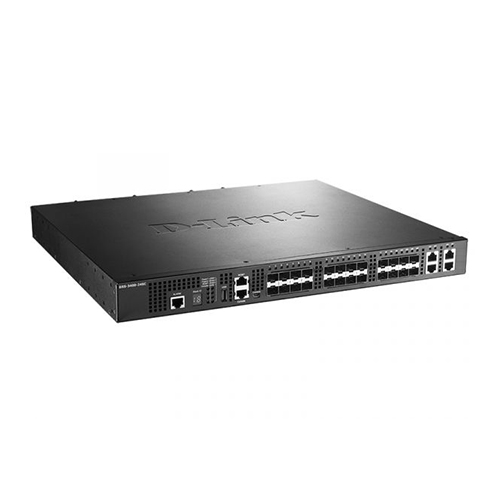
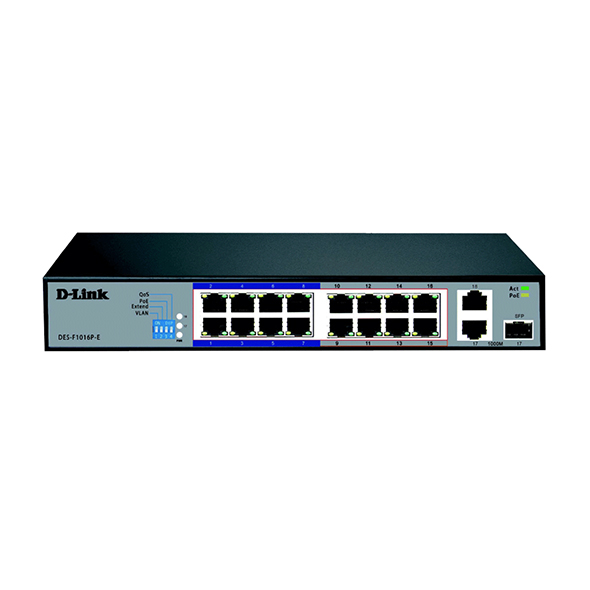

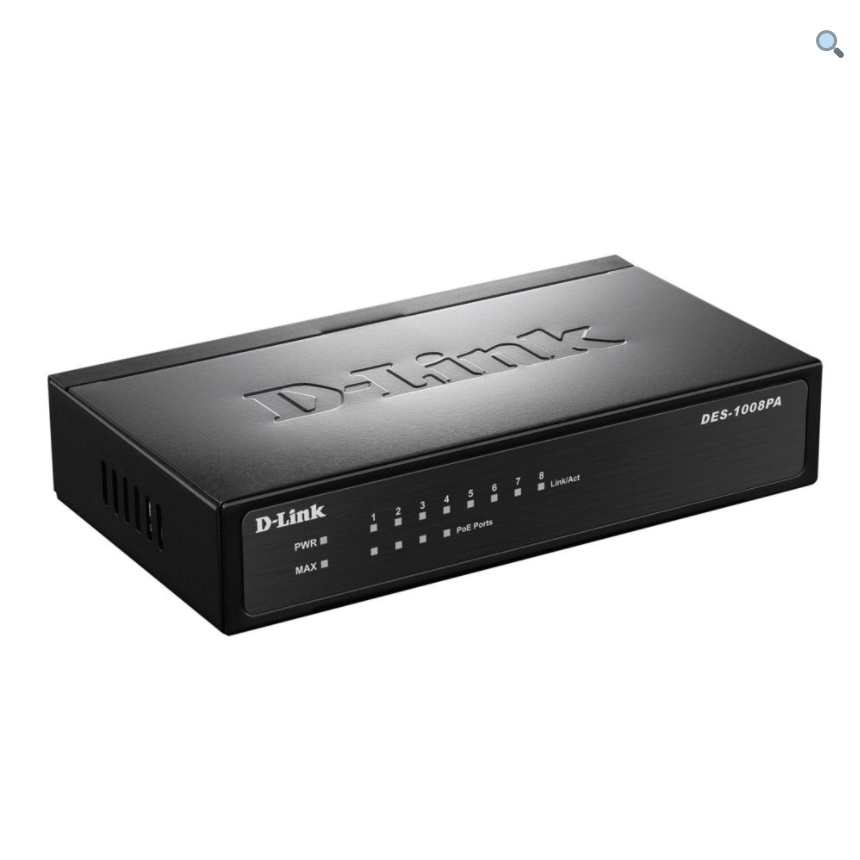
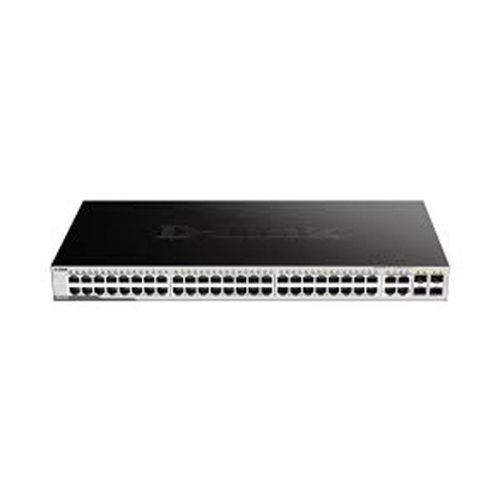
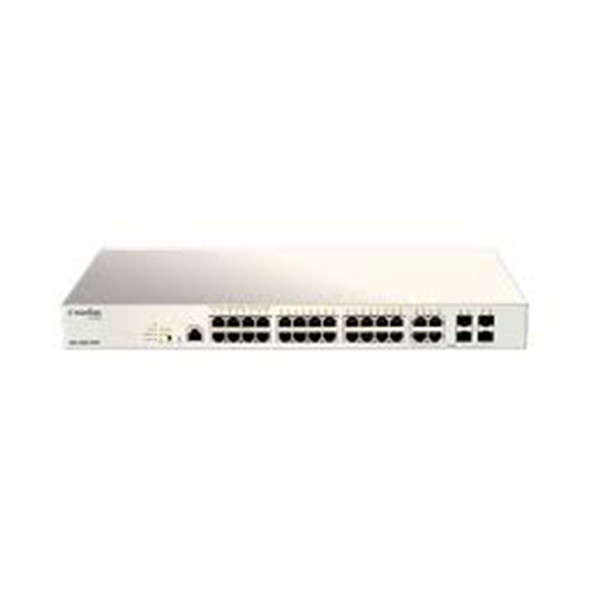
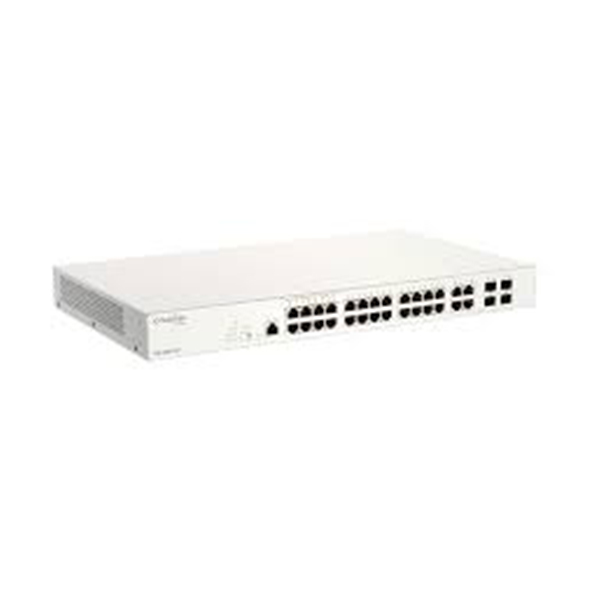


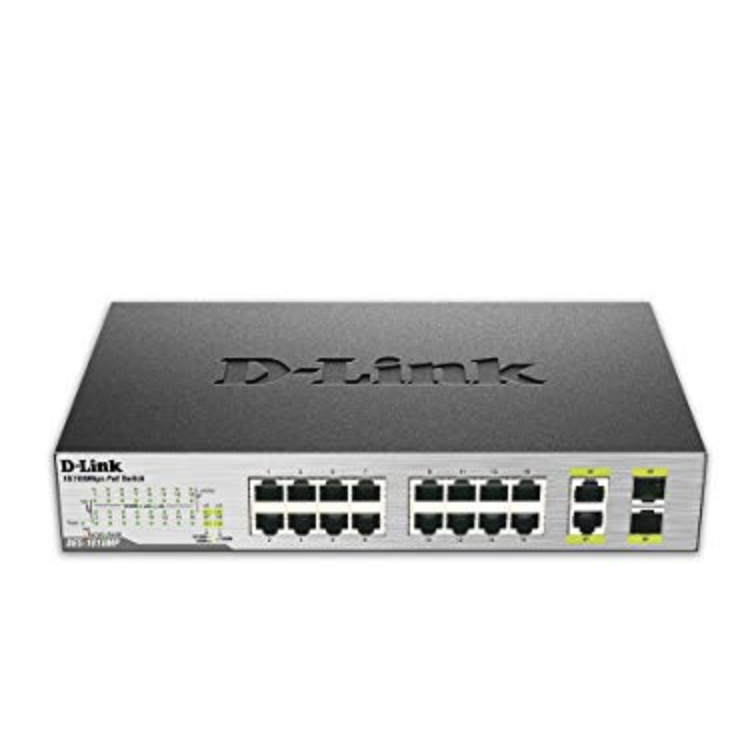


Reviews
There are no reviews yet.